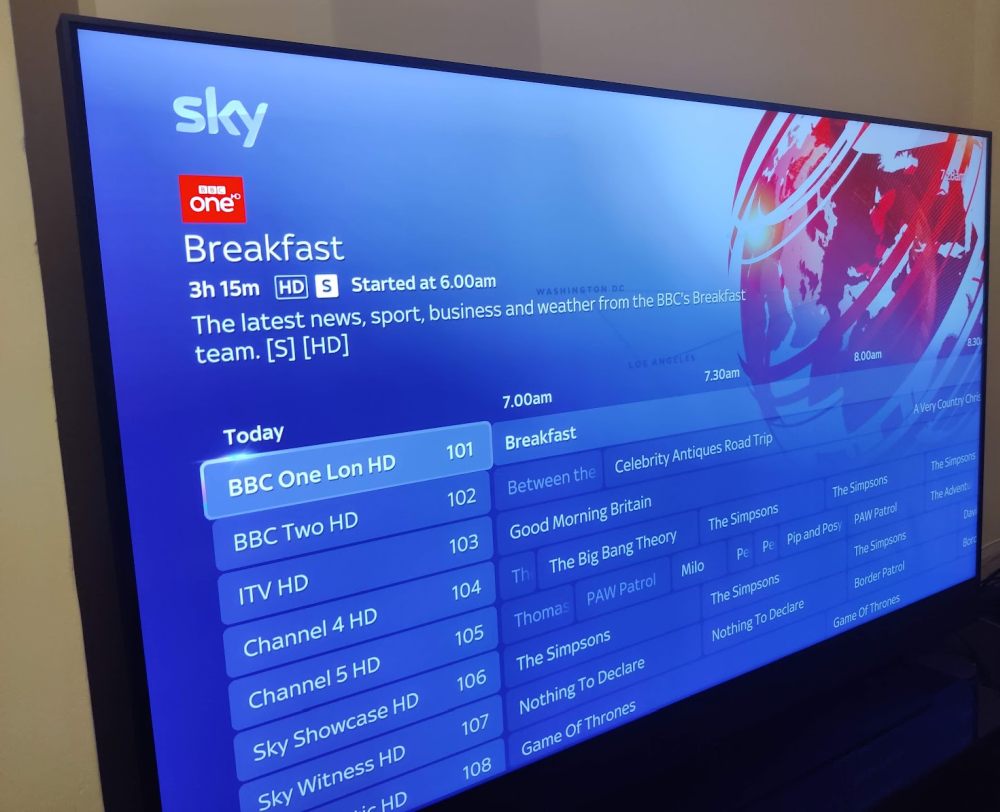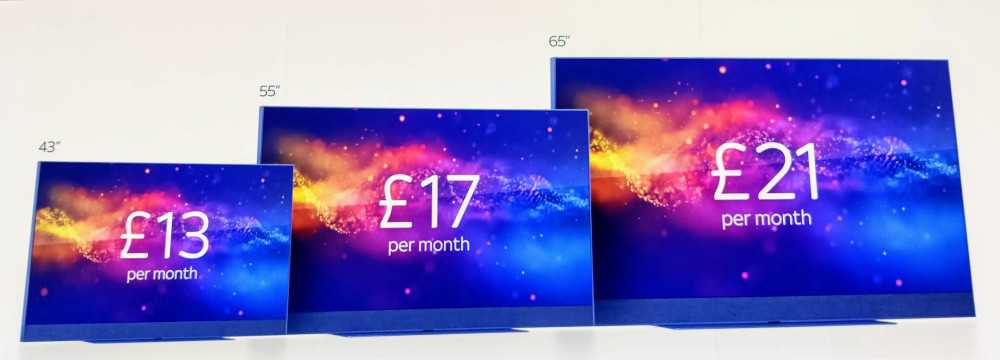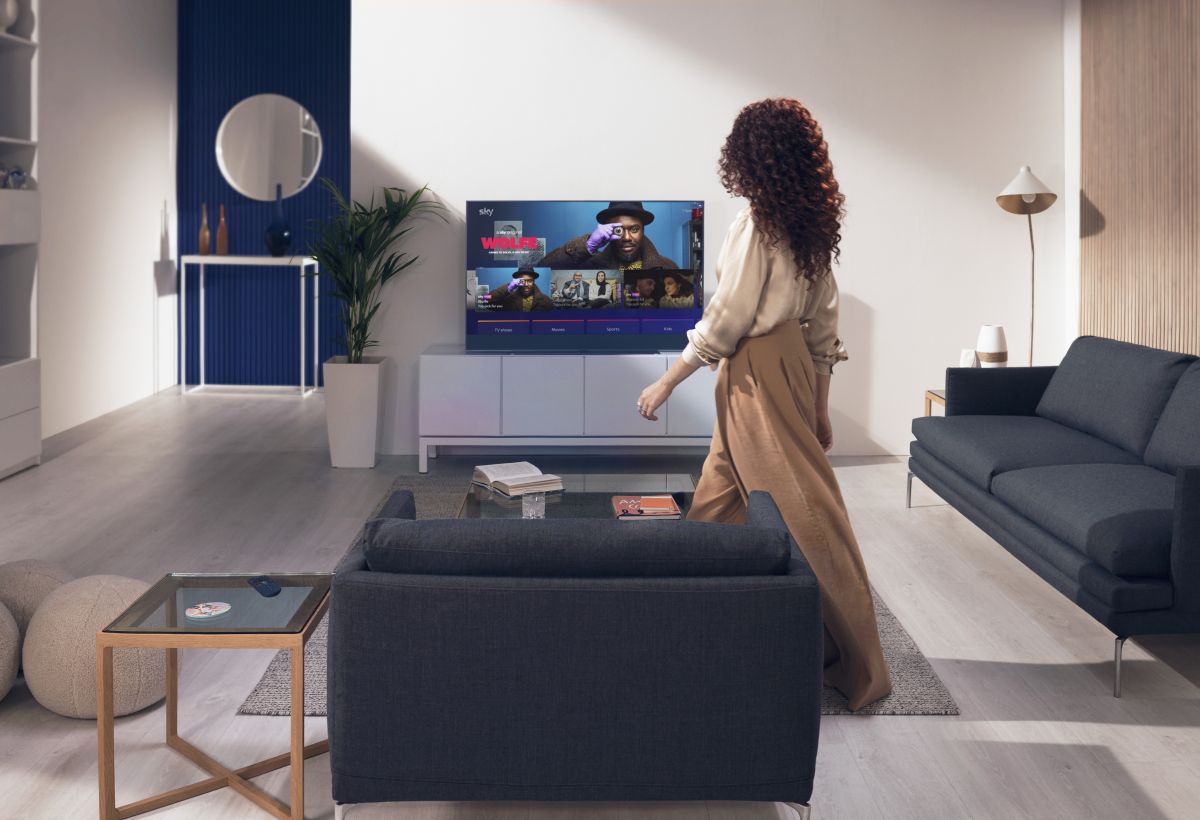Sky Glass, the new streaming TV from Sky, can now be ordered by all customers (when before it was only available to existing, long-time Sky customers).
The TV is now available to purchase directly on Sky’s website, or in Sky’s retail stores (see pricing details below).
Sky tells us that people who order now should get the TV within 3-5 days, and that if a particular size or colour is sold out, Sky will offer to notify you when it’s next available.
But four months after Sky Glass’ launch, is Sky happy with its bold streaming bet?
Judging by what Sky told us, and during owner Comcast’s recent earnings calls, Sky Glass is off to “a strong start”, and is “a really important growth opportunity” for the company.
And while Sky couldn’t share specific numbers, we’re told they’ve “seen huge demand for Sky Glass since it launched”, and they “continue to be excited for the future [of Glass]”.
But Sky Glass’ launch hasn’t been without issues – with some customers facing software bugs and early stock issues.
Furthermore, with Glass being such a radical departure from Sky Q (mainly in how it handles recordings, and its reliance on broadband), many potential customers are still confused by the promise of what Glass can actually do.

What Is Sky Glass?
Sky’s 4K TV set was first announced in October 2021. It features a QLED HDR screen, and a built-in Dolby Atmos soundbar with five speakers.
Unlike Sky’s other services in the UK (to date), Sky Glass doesn’t use a satellite dish – instead, it relies on broadband, and streams all the content to the TV, much like other streaming devices like the Amazon Fire TV and Roku – or streaming services like Sky’s own NOW (see our Sky Glass VS Now comparison).
In my review of Sky Glass, I was impressed with the device’s promise for the future, citing its global search as one of the best implementations among all other streaming devices available today. Picture and sound quality are decent (though mostly mid-range), but overall there’s still a lot Sky needs to do – bug fixes, missing channels, and a better recording method.
When you buy Sky Glass, you pay for the TV itself (the device), and for Sky’s channels and services.
If you pay the whole amount for the TV upfront, The 43″ TV costs £649, the 55″ is £849, and the £65″ is £1,049.
If you prefer monthly instalments, those payments are a loan, either for 24 or 48 months. It’s interest-free, but it still requires a status and credit check, so if you miss a payment, it could certainly affect your credit score.

The 43″ starts at £13/m, the 55″ is £17/month, and the £65″ is £21/month – if you choose the 48 months option (and it doubles if you go for the 24 months option). There’s also a £10 / £20 (depending on the length) upfront fee for all of them.
As for Sky’s services, the basic package you must have with Glass is Sky Ultimate, at £26/month. It includes Sky Entertainment (a pack of channels like Sky Atlantic, Sky Max and others), Freeview, and the basic Netflix plan, which only has SD content.
On top of that, you can add:
- Sky Cinema at £11/month.
- Sky Sports at £25/month.
- Sky Kids at £5/month.
If you want to add 4K and Dolby Atmos to Sky’s content, that’s another £5/month. If you want to be able to fast forward adverts on some apps/channels – that’s also £5/month (it’s free in your first year).
And finally, if you want to be able to watch in other rooms – you need the “Whole Home” addon, which is £10/month, AND a £50 one-off cost for each Sky Puck.
Unlike other Sky content services (like the one you get via Sky Q), Sky Glass customers don’t have to sign any long-term contracts. Instead, you get Sky Ultimate (and the other addons) on rolling monthly contracts, which you can cancel at any point (though you would still have to repay the loan on the TV itself, if you chose the instalments option).
Sky Glass’ Reception: Is Sky Happy?
While many were hoping to get a standalone streaming box from Sky (which, by the way, exists in Germany), that’s not the case with Sky Glass – and you have to buy the TV if you want to get streaming from Sky (Once you have the TV, you can get the Sky Puck – a standalone streaming box – but you can only get it if you also have Glass).

Sky also has its own streaming-only service, NOW – but, compared to Sky, it’s somewhat crippled at the moment (not offering 4K, for example, or all of Sky’s services and addons).
While some (including myself) speculated that the TV is Sky’s first stepping stone into the streaming world, Sky Glass’s product team told me that the TV was always the form of the product – and not an afterthought.
The goal was to give the customer an end-to-end experience – picture, audio, HDMI, streaming and content aggregation – all in one device.
Like what Apple does with its devices – where the company controls both the hardware and the operating system – Sky hopes to bring everything together, making it more straightforward for the customers.

But in addition to offering customers without a dish a streaming Sky option, Glass also represents additional future growth options for the company.
In Comcast’s recent earnings call, Dana Strong, Group CEO of Sky, said that Sky Glass “opens new headroom” for Sky – including new ways to make money, and keep loyal customers around:
“It gives us the opportunity to sell to customers that previously couldn’t have the service because they weren’t allowed DISH’s.
It opens up new customers who are more streaming-focused and value-conscious customers.”
Furthermore, by converting the cost of the TV into monthly instalments, like the mobile phone model, “it opens up new value-conscious segments for us.
“And it’s important to kind of say that this is a really good retention product”, Strong added, “As it’s a 24/48-month contract.
“It also appeals to existing customers, and it really deepens our relationship with them. So we’re feeling really good about how it appeals to new customer segments and shores up existing customers.”
It’s also worth remembering that with Glass, Sky can now make a margin on the equipment (by selling an actual TV) – something that hasn’t been the case with most of Sky’s products to date – “So that’s a new headroom for us”.
Sky Glass’ Future
Looking ahead, Sky has big plans for Sky Glass. Later this year, they’re planning to launch the Sky Camera: a 4K camera that will sit on top of Sky Glass and “will unlock a range of exciting new services for the whole family.”

Sky will be partnering with a range of 3rd party companies – such as Microsoft, Zoom and others, to provide apps and services such as video calling, gaming, and even working out.
As for the TV itself, with Sky repeatedly mentioning the mobile phone model, a similar method will apparently be adopted for new models of the TV – once customers finish paying the 24 or 48 instalments for the TV, they will be able to get a newer model – and just keep paying those hardware payments, with a new loan.
That’s what Sky means when they talk about better customer retention with Sky Glass – even though there are no long-term contracts anymore (for the content), customers may get used to paying every month for the TV itself.
The question remains whether we’ll see a standalone streaming box from Sky at some point – my bet is on Yes, but we’ll have to wait and see.
